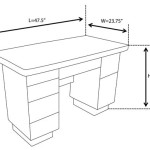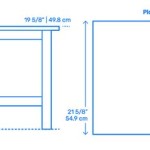What Is The Definition Of Water Table In Geography Terms?
The water table is a crucial concept in understanding groundwater systems and their role in shaping landscapes and supporting life. It represents the upper limit of the zone of saturation, where all pore spaces and fractures within soil and rock are filled with water. Understanding the water table's definition, its characteristics, and factors influencing its behavior is fundamental to fields such as hydrology, geology, and environmental science.
Defining the Water Table
The water table, also known as the groundwater table, is a dynamic surface within the Earth that marks the boundary between the unsaturated zone above and the saturated zone below. In the unsaturated zone, the spaces between soil particles and rock fragments hold air and water, with the water content varying depending on precipitation and evaporation. The saturated zone, on the other hand, is completely filled with water, creating a continuous body of groundwater.
The water table is not a fixed surface but fluctuates in response to various factors, including precipitation, evapotranspiration, and groundwater extraction. For example, after a heavy rainfall event, the water table rises, while during prolonged dry periods or excessive groundwater withdrawal, it may decline.
Key Characteristics of the Water Table
Several characteristics help define and understand the behavior of the water table:
- Shape and Topography: The water table generally follows the contours of the land surface, but it can be influenced by geological features like valleys, hills, and underground formations.
- Depth: The depth to the water table varies significantly across different locations and time periods, depending on factors like climate, soil type, and human activities.
- Flow: Groundwater, including the water table, is not stagnant but flows due to gravity and pressure gradients. The direction and rate of flow are influenced by the geological structure and the water table's slope.
- Recharge and Discharge: The water table is constantly being replenished through recharge, which occurs when precipitation infiltrates the ground, and depleted through discharge, which happens when water flows out of the groundwater system, for example, through springs, wells, or evapotranspiration.
Factors Influencing the Water Table
The position and behavior of the water table are affected by various factors, both natural and human-induced.
Natural Factors
- Precipitation: Rainfall is the primary source of groundwater recharge, and variations in precipitation patterns significantly impact the water table's level.
- Evapotranspiration: The process of water evaporating from the soil and transpiring from plants removes water from the groundwater system and lowers the water table.
- Geology: The type of rock and soil formations determine the permeability and porosity of the ground, directly impacting the water table's depth and flow.
- Topography: The shape of the land surface influences groundwater flow paths and the water table's elevation.
Human-Induced Factors
- Groundwater Extraction: Excessive pumping of groundwater for irrigation, municipal supply, or industrial uses can significantly lower the water table, leading to depletion and even land subsidence.
- Land-use Changes: Urbanization, deforestation, and agricultural practices can alter infiltration rates and groundwater recharge, affecting the water table's behavior.
- Pollution: Contaminants from industrial activities, sewage disposal, and agricultural runoff can pollute groundwater and affect its quality, impacting the usability of the water table.
- Climate Change: Alterations in precipitation patterns and increased evapotranspiration due to climate change can cause significant changes in the water table's dynamics.
Understanding the factors influencing the water table is crucial for sustainable water resource management, environmental protection, and ensuring long-term water security.

Water Table Definition Depth Examples Lesson Study Com

Water Table Wikipedia

What Is Groundwater The Foundation

Kgs Sedgwick County Geohydrology Ground Water

8 M Throughflow And Groundwater Storage

Water Table

Groundwater Ck 12 Foundation

Groundwater
Groundwater Wikipedia

Water Table Definition Depth Examples Lesson Study Com








